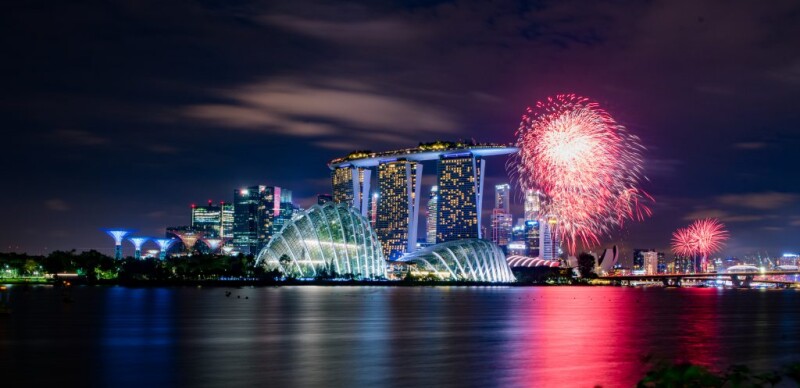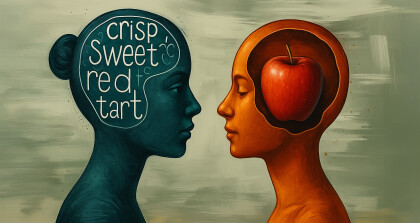One of the most common questions I have been asked since moving here in 2014, is how the work culture between Singapore and New Zealand compares. To be frank, I still don’t feel like I’m qualified to make that comparison, since Media Suite is the first and only place I’ve worked at in New Zealand. I think I’ve struck it lucky!
I can go on about how Media Suite’s a great place to work, and how awesome the team is, but I feel like that’s now well established in previous blog posts by myself and the team. So I thought, maybe I can share what life is like in Singapore, and how it prepared me for working in NZ instead.
The Little Red Dot
First up, a bit of background. Singapore is a city-state in South-east Asia, just 1 degree north of the equator. It’s also affectionately called the ‘Little Red Dot’ by Singaporeans, because that’s all you’ll see on a map most of the time. Since way before independence from Britain in 1965, it was (and still is) a major trading port due to its strategic location between the Indian Ocean and South China Sea.
It merely covers a slightly larger area than Lake Taupo, but has a total population of 5.64 million in 2018, of which 39% are foreign nationals. The citizen population is made up mostly of ethnic Chinese (76.2%), Malays (15.0%), ethnic Indians (7.4%) and Eurasians/others.
Diversity
Having such a diverse group of people live and work together has its challenges – communication between speakers of different native languages, for one. Although English is the lingua franca, which most of us speak rather fluently at work and in school, Singlish, is what we use actually use in day to day conversations. It is also how I recognise fellow Singaporeans overseas.
Singlish is a hybrid language where words and grammar from different native languages (e.g. Tamil, Malay and Chinese) infused with the Queen’s English. I’ve always thought of it as a symbol of the diversity in Singapore, showcasing the mix of races and how they impact communication.
In hindsight, I think growing up in such a multiracial and multicultural country is what made me see and value diversity in both society and work places. It also made me feel more confident and comfortable about moving here and adapting to my new home.
An added bonus to this diversity is that we often had a range of food brought in for sharing, and that’s something I have tried to continue doing with the team here at Media Suite. Sharing a meal or a morning tea and experiencing the food from a range of communities is a great way to bring people together.
Work Culture
Singapore is a former British colony, but ethnic Chinese make up the majority of the population. The work culture is therefore a unique mix between Asian and Western values.
Unless you work in multinational companies, which tend to be more open with shared decision making and higher trust in their staff, most companies can still be quite hierarchical – as in most Asian countries. In real world terms, is means “subordinates” very rarely voice their dissent, or violate chain of commands, as it would be viewed as a sign of disrespect.
“Study hard and work harder” was the ethos that most of us internalised, which meant that long hours at work was not uncommon. A survey done in 2016 by a human resource consultancy found that millennials in Singapore worked 48 hours a week on average, which is the second-longest globally, alongside China and Mexico.
Heard stories about folks who stays put in the office till their bosses leave? That’s real. Being red-flagged if you leave work early or even on time? Yep. Staying back to finish work that can be finished the next day just to be known as hardworking? Also real.
I wasn’t really surprised when I found out that 50% of the Singaporean workers (compared to 43% globally) take tasks home to finish at the end of the day, more than 3 times a week, and 19% of them regularly work more than 11 hours a day.
That I do not miss.
Kiasuism
Lastly, I realised I can’t really talk about working or living in Singapore without bringing this up. Kiasu-ism (pronounced kee-uh-soo-ism) is a Singlish word, which originates from Hokkien (a dialect of Mandarin) and literally means ‘fear of losing out’. It can be found in the Oxford English Dictionary, and is defined as ‘…a grasping, selfish attitude’. It can also encompass any sort of competitive, stingy or inconsiderate behaviour.
You know how the Number 8 Wire mentality is the national psyche of Kiwis? Kiasuism would be the Singaporean equivalent. It’s been drilled into us because Singapore’s a tiny nation vulnerably situated in the middle of South-East Asia, surrounded by neighbours who are culturally different. Therefore we’ve got to be self-reliant, we need to stay hungry and be ahead of the curve to stay relevant.
And that’s the reason why Singaporeans are known to be efficient, and always wanting to be the first or best in everything. And it is clearly paying off some respects. The Global Competitiveness Index 2017-18 ranked Singapore 3rd out of 137 economies. I’m still unsure if this kind of success is born out of that fear of losing, or a sense of ambition. I still find myself falling into that trap of a fixed mindset occasionally, and remind myself that winning isn’t everything. Working around a group of people who focuses on learning definitely helps ground me.
All in all, I can tell you that although I’m deeply appreciative of the grounding that those experiences back in Singapore have given me, I’m glad I have the privilege of moving here to Aotearoa.














